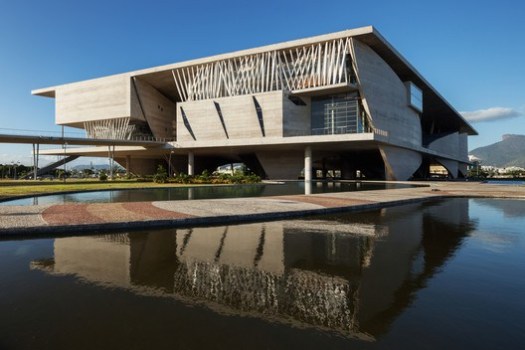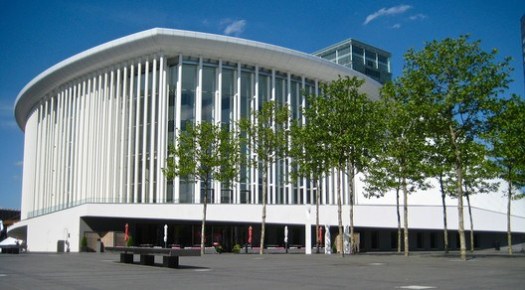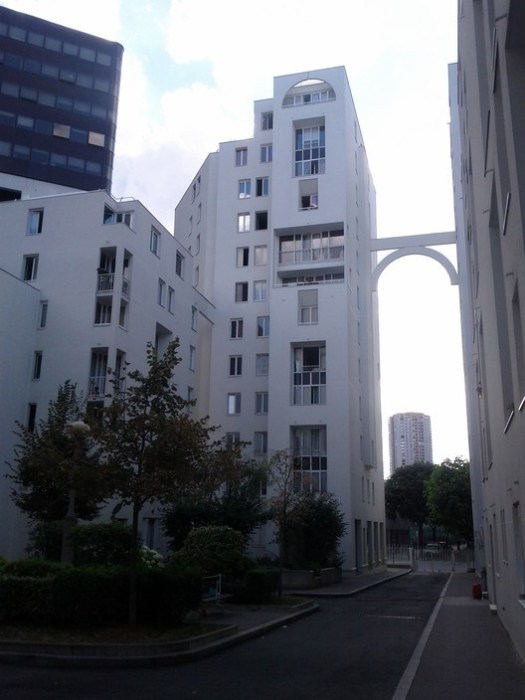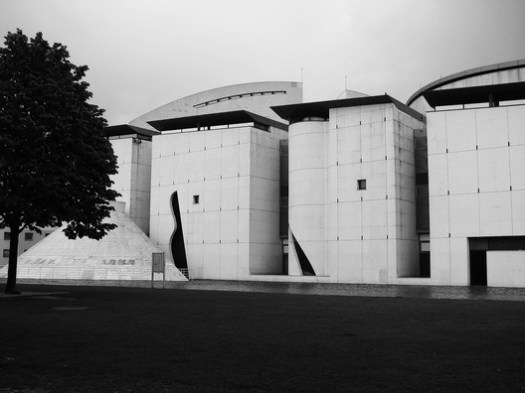<figure>
 Cidade das Artes, Rio de Janerio. Image © Nelson Kon
Born on the 5th of May 1944 in what was at the time the French Protectorate of Morocco, French architect Christian de Portzamparc had doubts about continuing with architecture while studying in the 1960s, questioning modernist ideals and the discipline's lack of freedom compared to art. Instead, he spent a decade attempting to understand the role of architecture, before returning triumphantly with a new model of iterative urban design that emphasized open neighborhoods based around landmark "poles of attraction" and a varied series of high-profile commissions that combine a sense of purpose and place.
Cidade das Artes, Rio de Janerio. Image © Nelson Kon
Born on the 5th of May 1944 in what was at the time the French Protectorate of Morocco, French architect Christian de Portzamparc had doubts about continuing with architecture while studying in the 1960s, questioning modernist ideals and the discipline's lack of freedom compared to art. Instead, he spent a decade attempting to understand the role of architecture, before returning triumphantly with a new model of iterative urban design that emphasized open neighborhoods based around landmark "poles of attraction" and a varied series of high-profile commissions that combine a sense of purpose and place.
 Image via <a href='http://www.christiandeportzamparc.com/en/portrait/'>christiandeportzamparc.com</a>
Image via <a href='http://www.christiandeportzamparc.com/en/portrait/'>christiandeportzamparc.com</a>
 Philharmonie Luxembourg, Luxembourg. Image © <a href='https://www.flickr.com/photos/borkurdotnet/5695929329'>Flickr user borkurdotnet</a> licensed under <a href='https://creativecommons.org/licenses/by/2.0/'>CC BY 2.0</a>
Philharmonie Luxembourg, Luxembourg. Image © <a href='https://www.flickr.com/photos/borkurdotnet/5695929329'>Flickr user borkurdotnet</a> licensed under <a href='https://creativecommons.org/licenses/by/2.0/'>CC BY 2.0</a>
Studying under Eugène Beaudouin's restrained expressionism and George Candilis' network focus at the École Nationale des Beaux-Arts in Paris,



 Les Hautes-Forms apartments, Paris. Image © <a href='https://commons.wikimedia.org/wiki/File:Hautes_Formes_Immeuble_hlm_paris_13.jpg'>Wikimedia user Julienfr112</a> licensed under <a href='https://creativecommons.org/licenses/by-sa/3.0/deed.en'>CC BY-SA 3.0</a>
Les Hautes-Forms apartments, Paris. Image © <a href='https://commons.wikimedia.org/wiki/File:Hautes_Formes_Immeuble_hlm_paris_13.jpg'>Wikimedia user Julienfr112</a> licensed under <a href='https://creativecommons.org/licenses/by-sa/3.0/deed.en'>CC BY-SA 3.0</a>
 Concept drawings for Les Hautes-Forms. Image © Atelier Christian de Portzamparc <a href='https://commons.wikimedia.org/wiki/File:1975-1979_Les_Hautes-Formes_housing_project,_Paris,.jpg'>via Wikimedia</a> licensed under <a href='https://creativecommons.org/licenses/by-sa/2.0/fr/deed.en'>CC BY-SA 2.0 FR</a>
Concept drawings for Les Hautes-Forms. Image © Atelier Christian de Portzamparc <a href='https://commons.wikimedia.org/wiki/File:1975-1979_Les_Hautes-Formes_housing_project,_Paris,.jpg'>via Wikimedia</a> licensed under <a href='https://creativecommons.org/licenses/by-sa/2.0/fr/deed.en'>CC BY-SA 2.0 FR</a>
His first major work, the Haute-Formes housing project in Paris, saw De Portzamparc scrap the planned tower blocks and replace them with what would become his influential approach to planning, opening up the oddly shaped site with an arcade and square, and filling the rest of the area with smaller apartment buildings. The combination of cohesive style and individual elements in the plan was a success, and he rapidly moved on to a number of high-profile commissions, including the Paris Opera's Dance School (1987), the Musée Bourdelle (1990) and the City of Music (1994) - part of François Mitterand's Grands Projets for Paris, which took De Portzamparc's urban planning philosophy and shrunk it down into a single complex of horizontal and vertical streets, central square and blended interior and exterior space.
 The City of Music, Paris. Image © <a href='https://www.flickr.com/photos/laurenmanning/2726733311'>Flickr user laurenmanning</a> licensed under <a href='https://creativecommons.org/licenses/by/2.0/'>CC BY 2.0</a>
The City of Music, Paris. Image © <a href='https://www.flickr.com/photos/laurenmanning/2726733311'>Flickr user laurenmanning</a> licensed under <a href='https://creativecommons.org/licenses/by/2.0/'>CC BY 2.0</a>
<img src="http://feeds.feedburner.com/~r/ArchDaily/~4/nxI6O6Pa9vI" height="1" width="1" alt=""/>
